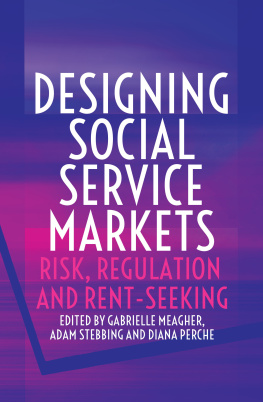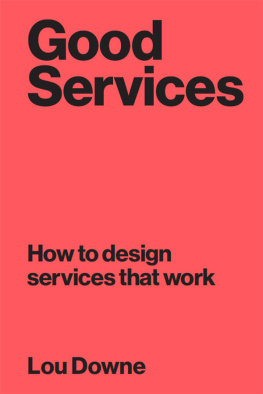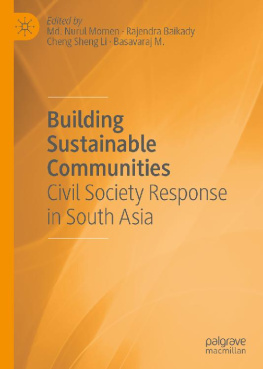Billie Oliver and Bob Pitt 2013
All rights reserved. No reproduction, copy or transmission of this publication may be made without written permission.
No portion of this publication may be reproduced, copied or transmitted save with written permission or in accordance with the provisions of the Copyright, Designs and Patents Act 1988, or under the terms of any licence permitting limited copying issued by the Copyright Licensing Agency, Saffron House, 610 Kirby Street, London EC1N 8TS.
Any person who does any unauthorized act in relation to this publication may be liable to criminal prosecution and civil claims for damages.
The authors have asserted their rights to be identified as the authors of this work in accordance with the Copyright, Designs and Patents Act 1988.
First published 2013 by
PALGRAVE MACMILLAN
Palgrave Macmillan in the UK is an imprint of Macmillan Publishers Limited, registered in England, company number 785998, of Houndmills, Basingstoke, Hampshire RG21 6XS.
Palgrave Macmillan in the US is a division of St Martins Press LLC, 175 Fifth Avenue, New York, NY 10010.
Palgrave Macmillan is the global academic imprint of the above companies and has companies and representatives throughout the world.
Palgrave and Macmillan are registered trademarks in the United States, the United Kingdom, Europe and other countries
ISBN: 9780230363076 paperback
This book is printed on paper suitable for recycling and made from fully managed and sustained forest sources. Logging, pulping and manufacturing processes are expected to conform to the environmental regulations of the country of origin.
A catalogue record for this book is available from the British Library.
A catalog record for this book is available from the Library of Congress.
To all those women and men, children and young people
whose voices have yet to be heard.List of Activities, Case Studies and Boxes
Activities
Engaging with this book
Defining community
Defining service user
Overarching themes in community
Unchosen communities
Defining involvement
Defining participation
A potpourri of participation models
Understanding engagement
Policy and community
Devising a community programme
Is Britain broken?
Local decision making
Belonging to a community
Identifying a range of local services
Constructed community
New members
Reflecting on the case study
Community hubs
At what age can I ?
UK Citizen test
Refugee, asylum seeker and migrant worker
Citizens Day
Practitioners and active citizenship
Modern day philanthropists
Co-operative organisations
User-led organisations
Service user or powerful partner
Revisiting Swindon Family LIFE Programme and Tower block troubles
Reflecting on community development principles in practice
Reflecting on Gilchrists seven Es in practice
Reflect on the Restless Development case study
Professional tensions and dilemmas
Revisiting Swindon Family LIFE Programme and Restless Development
Boundary crossing
Speaking up for someone
Choosing forms of advocacy
Evaluating mentoring
Understanding the differences between advocacy and mentoring
Reflecting on your learning experiences
Informal education and social capital
Informal education and voluntary participation
Learning activities
Revisiting Swindon Family LIFE Programme
Reflecting on this case study
Using visual media
Liberation or manipulation?
Inputs, processes, outputs and outcomes
National Indicator categories
Evaluating your experiences
Practice and policy
Online community
Reflecting on street parties as community development
Tensions in online communities
Revisiting the Swindon Family LIFE Programme
Identifying spaces
Case Studies
Community at Heart
Big Society
Eden Valley
In Control
Wales Alliance for Citizen Directed Support
The Swindon Family LIFE Programme
Community Resolve: Tower block troubles
Restless Development (Tanzania)
Arab Spring
European citizenship
Active Learning for Active Citizenship programme (ALAC)
Good and active citizen
Community councils
Restless Development (Tanzania)
Working in the community
Practitioner dilemma
My Life My Choice
Advocacy for disabled children and young people
Big Brothers Big Sisters mentoring program
Grandmentors
100 Black Men of London
Mentoring Plus
Saplings in the forest
My new friends
Best Value
Involve
Service user involvement in methadone maintenance programmes
Assessing the Quality of Youth Peer Education (Y-PEER) programmes
Most Significant Change (MSC) technique
Streets Alive
Boxes
Who is a service user?
Localism Act 2011
Traditions or types of citizenship
Active citizenship
Nine plagues
Gilchrists seven Es of community development
Managing endings (Lombard, 2010)
The Advocacy Charter
Four pragmatic steps of empowerment evaluation (Fetterman, 1996)
Acknowledgements
We are indebted to a number of colleagues and friends for their support, advice and generosity in contributing ideas and suggestions to guide our thinking as we developed this book. In particular we would like to thank Jane Dalrymple, Pat Taylor, Harry Shier and Robin Hambleton for their collegiality and insight and for sharing with us some of their own models and ideas. We are also grateful to Frank Harle (Restless Development) and Hen Wilkinson (Community Resolve) for work they are engaged in and for their generosity in helping to develop the interesting case studies we have drawn on. Finally, and in no small measure, we would like to thank our families, and in particular Penny and Iain, for their patience and encouragement.
The author and publisher would like to thank the following publishers and organisations for permission to reproduce copyright material:
Danny Burns, Robin Hambleton and Paul Hoggett for on page 17 from D. Burns, R. Hambleton and P. Hoggett: The Politics of Decentralisation: Revitalising Local Democracy (1994), Palgrave Macmillan Publishers LTD.
John Wiley and Sons for on page 19 from H. Shier: Pathways to participation: openings, opportunities and obligations in Children & Society, 15: 107117.






